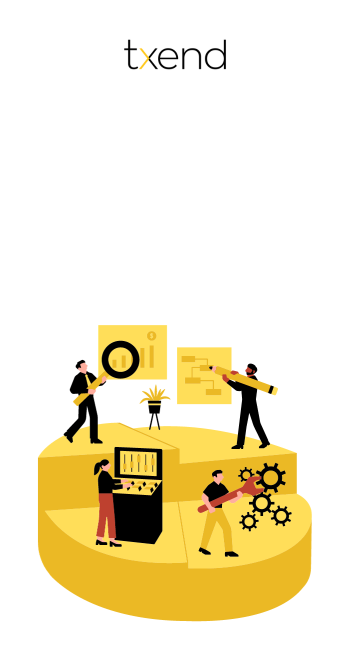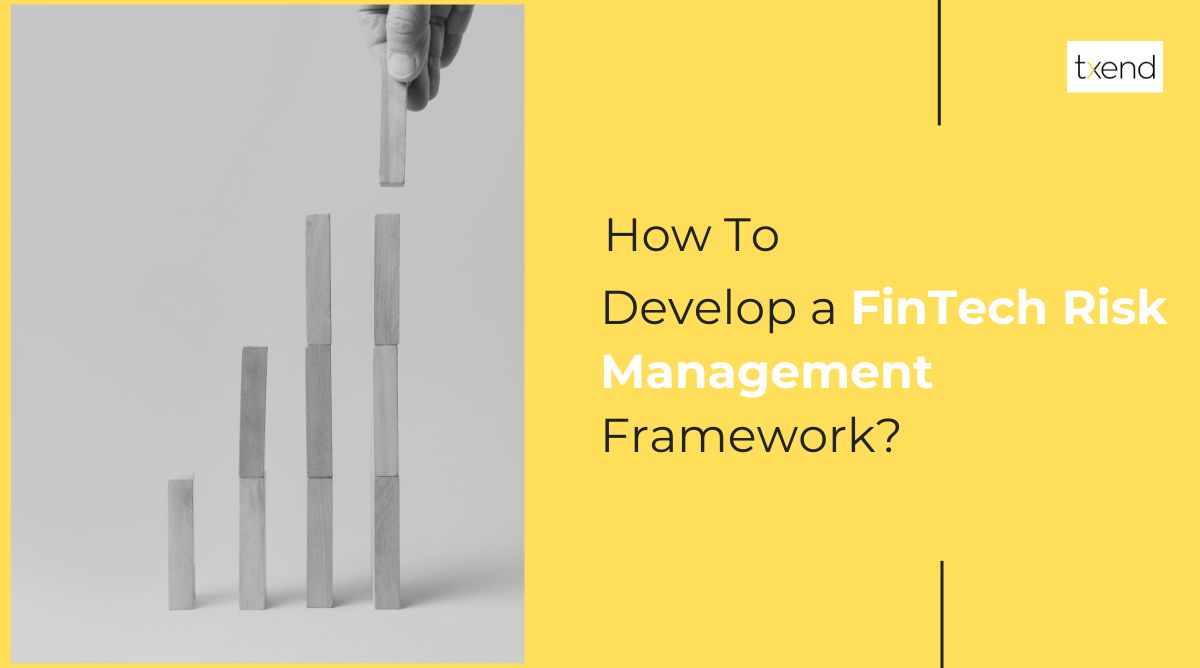Fintech companies are playing an increasingly important role in the US financial system. However, fintech companies face several risks, such as cyberattacks, data breaches, and fraud. Fintech companies need to develop and implement a comprehensive risk management framework to mitigate these risks.
This article will provide a step-by-step guide on how to develop and implement a fintech risk management framework. The guide will cover the following topics:
- Identifying and assessing risks
- Developing risk management policies and procedures
- Implementing and monitoring risk management controls
- Reporting and communicating risk information
This guide is designed for fintech companies of all sizes, regardless of their level of maturity or experience.
Fintech and risk management
Fintech companies are exposed to a wide range of risks, including:
- Cybersecurity risks: Fintech companies are often targeted by cyberattacks because they hold sensitive financial data.
- Data breach risks: Fintech companies need to protect the privacy of their customers’ data.
- Fraud risks: Fintech companies need to be able to detect and prevent fraud.
- Compliance risks: Fintech companies must comply with all applicable laws and regulations.
- Operational risks: Fintech companies need to have robust systems and processes in place to manage their operations.

Fintech risk management
Fintech risk management is the process of identifying, assessing, and mitigating the risks faced by FinTech companies. Fintech risk management is essential for protecting the company’s assets, customers, and reputation.
A fintech risk management framework should be based on the following principles:
- Risk-based approach: The risk management framework should be based on a comprehensive understanding of the company’s risks.
- Proportionality: The risk management framework should be proportionate to the size and complexity of the company.
- Integration: The risk management framework should be integrated into the company’s business strategy and operations.
- Continuous improvement: The risk management framework should be reviewed and updated regularly to reflect changes in the company’s business and the risk environment.
This guide will help you develop and implement a fintech risk management framework tailored to your company’s specific needs.
Key Takeaways
- Fintech risk management involves identifying, assessing, and mitigating potential risks in financial technology operations to ensure stability and security.
- The Importance of Fintech Risk Management Framework lies in ensuring compliance with regulations, data security, and overall business sustainability.
- To develop a fintech risk management framework, understand regulations, assess risks, and create strategies for mitigation and compliance.
- Implementing a fintech risk management framework involves putting the strategies and processes into action, continuously monitoring and adjusting them.
- Documenting the risk management framework is crucial for compliance, transparency, and accountability, ensuring that risk mitigation measures are well-documented.
- The benefits of having a fintech risk management framework include regulatory compliance, data security, risk mitigation, and enhanced investor and user confidence.
Importance of Fintech Risk Management Framework
Compliance Assurance
Ensures adherence to complex and evolving financial regulations and standards in the highly regulated US market.
Data Security
Protects sensitive user data and financial information from cyber threats and data breaches, fostering trust.
Risk Mitigation
Identifies and addresses potential risks, minimizing financial losses and reputation damage.
Investor Confidence
Attracts investors by demonstrating a commitment to risk management, increasing credibility and funding opportunities.

Operational Efficiency
Streamlines processes and reduces operational inefficiencies, optimizing resource allocation and reducing costs.
Consumer Protection
Safeguards consumers by ensuring fair and transparent financial practices, and promoting trust in fintech solutions.
Innovation Enablement
Balances risk and innovation, allowing fintech companies to continue developing cutting-edge solutions while managing associated risks.
Competitive Advantage
Positions fintech firms ahead of competitors by demonstrating a proactive approach to risk management and compliance.
Business Continuity
Ensures uninterrupted service delivery, safeguarding the integrity of fintech operations even in adverse circumstances.
How to develop a fintech risk management framework?
To develop a fintech risk management framework in the USA, you should follow these steps:
Identify and assess risks
The first step is to identify and assess all of your fintech company’s risks. This includes both financial and non-financial risks. You can use various methods to identify and assess risks, such as brainstorming, risk workshops, and surveys.
Develop risk management policies and procedures
Once you have identified and assessed your risks, you must develop risk management policies and procedures. These policies and procedures should outline how you will manage each risk. The specific policies and procedures you need will vary depending on the risks you face.
Implement and monitor risk management controls
Once you have developed your risk management policies and procedures, you need to implement and monitor risk management controls. These controls are designed to mitigate the risks that you have identified. The specific controls you need will vary depending on the risks you face.

Report and communicate risk information
Reporting and communicating risk information to your board of directors, senior management team, and other stakeholders is important. This will help ensure that everyone is aware of the risks the company faces and the steps being taken to manage those risks.
Here are some additional tips for developing a fintech risk management framework in the USA:
- Align your risk management framework with your company’s business strategy and operations.
- Ensure that your risk management framework is proportionate to the size and complexity of your company.
- Involve all relevant stakeholders in developing and implementing your risk management framework.
- Review and update your risk management framework regularly to reflect changes in your company’s business and the risk environment.
Resources are available to help you develop a fintech risk management framework in the USA. The Office of the Comptroller of the Currency (OCC) has issued several guidance documents on fintech risk management. The Federal Reserve Board (FRB) has also issued guidance on fintech risk management.
In addition, several private sector organizations offer resources on fintech risk management. These organizations include the Financial Industry Regulatory Authority (FINRA) and the American Bankers Association (ABA).
By following the steps above and using the available resources, you can develop a fintech risk management framework that will help protect your company, customers, and investors.
How to implement a fintech risk management framework?
To implement a fintech risk management framework in the USA, you should follow these steps:
Get buy-in from senior management.
Getting buy-in from senior management for your fintech risk management framework is important. This will ensure the framework has the necessary resources and support to succeed.
Establish a risk management committee
The risk management committee should oversee implementing and maintaining the fintech risk management framework. The committee should comprise senior representatives from various departments, such as finance, legal, operations, and IT.
Identify and assess risks.
The next step is to identify and assess all of your fintech company’s risks. This includes both financial and non-financial risks. You can use various methods to identify and assess risks, such as brainstorming, risk workshops, and surveys.
Develop risk management policies and procedures
Once you have identified and assessed your risks, you must develop risk management policies and procedures. These policies and procedures should outline how you will manage each risk. The specific policies and procedures you need will vary depending on the risks you face.
Implement and monitor risk management controls
Once you have developed your risk management policies and procedures, you need to implement and monitor risk management controls. These controls are designed to mitigate the risks that you have identified. The specific controls that you need will vary depending on the risks that you face.
Report and communicate risk information
Reporting and communicating risk information to your board of directors, senior management team, and other stakeholders is important. This will help ensure that everyone is aware of the risks the company faces and the steps being taken to manage those risks.
Here are some additional tips for implementing a fintech risk management framework in the USA:
- Use a risk management software solution. There are several risk management software solutions available that can help you to implement and maintain your fintech risk management framework.
- Get external help. You can hire a consultant or advisor if you need help developing or implementing your fintech risk management framework. Several firms specialize in fintech risk management.
- Test your risk management framework regularly. It is important to test your risk management framework regularly to ensure effectiveness. You can test your framework by conducting stress tests and scenario analyses.
By following the steps above and using the available resources, you can implement a fintech risk management framework that will help protect your company, customers, and investors.
Here are some specific examples of FinTech risk management controls that you may want to implement:
- Cybersecurity controls: These controls can help to protect your company from cyberattacks, such as firewalls, intrusion detection systems, and data encryption.
- Data breach controls: These controls can help to prevent data breaches, such as access controls, data masking, and data loss prevention systems.
- Fraud controls: These controls can help to detect and prevent fraud, such as identity verification, fraud analytics, and transaction monitoring.
- Compliance controls: These controls can help ensure your company complies with all applicable laws and regulations.
- Operational risk controls: These controls can help to reduce operational risks, such as business continuity planning, disaster recovery planning, and risk-based audits.
The specific fintech risk management controls that you need will vary depending on the risks that you face. You should work with your risk management committee to develop a risk management framework tailored to your company’s specific needs.
Document the risk management framework
Identify the purpose of the documentation
What do you want the documentation to achieve? Do you want it to be a reference guide for employees, a tool for training new employees, or a way to demonstrate to regulators that you have a robust risk management framework?
Determine the audience for the documentation
Who will be reading the documentation? Employees at all company levels, the board of directors, or regulators? The audience will determine your level of detail and technical language.
logically organize the documentation
The documentation should be easy to read and navigate. Consider using a table of contents and headings to organize the information.
Use clear and concise language
Avoid using jargon and technical terms that your audience may not understand.

Include examples and illustrations
Examples and illustrations can help to explain complex concepts in a clear and easy-to-understand way.
Review and update the documentation regularly
The risk management framework should be reviewed and updated regularly to reflect changes in your company’s business and the risk environment.
Here are some specific things to include in your risk management framework documentation:
- Introduction: This section should provide an overview of the risk management framework, including its purpose, scope, and audience.
- Risk management process: This section should describe the risk management process that your company uses, including the steps involved in identifying, assessing, mitigating, and monitoring risks.
- Risk identification: This section should describe your company’s methods to identify risks.
- Risk assessment: This section should describe your company’s methods to assess the likelihood and impact of risks.
- Risk mitigation: This section should describe your company’s controls and strategies to mitigate risks.
- Risk monitoring: This section should describe the methods that your company uses to monitor risks and to ensure that the risk management framework is effective.
You may also want to include the following sections in your risk management framework documentation:
- Risk management roles and responsibilities: This section should define the roles and responsibilities of different stakeholders in the risk management process.
- Risk management policies and procedures: This section should document your company’s policies and procedures to manage risks.
- Risk management reporting: This section should describe the frequency and format of risk management reporting.
You can document your risk management framework using various tools, such as word processors, spreadsheets, and presentation software. The most important thing is to choose a tool that is easy to use and will allow you to create a clear and concise document.
Once you have documented your risk management framework, you should review it with your board of directors and senior management team. This will help ensure that everyone knows the framework and that the entire company supports it.
What are the benefits of having a fintech risk management framework?
Regulatory Compliance
Ensures adherence to complex US financial regulations, reducing the risk of regulatory penalties and legal issues.
Data Security
Protects sensitive user data and financial information from cyber threats, enhancing trust and user confidence.
Risk Mitigation
Identifies and addresses potential risks, minimizing financial losses and reputation damage.
Operational Efficiency
Streamlines processes and reduces operational inefficiencies, optimizing resource allocation and reducing costs.
Investor Confidence
Attracts investors by demonstrating a commitment to risk management, increasing credibility and funding opportunities.
Business Continuity
Ensures uninterrupted service delivery, safeguarding the integrity of fintech operations even in adverse circumstances.
Consumer Protection
Safeguards consumers by ensuring fair and transparent financial practices, and promoting trust in fintech solutions.
Innovation Enablement
Balances risk and innovation, allowing fintech companies to continue developing cutting-edge solutions while managing associated risks.
Competitive Advantage
Positions fintech firms ahead of competitors by demonstrating a proactive approach to risk management and compliance.
Cost Reduction
Reduces operational costs by minimizing losses due to risk events, including fraud, cyberattacks, and regulatory fines.
Enhanced Reputation
Maintains a positive reputation in the market, attracting more users and partners due to trust in secure and compliant operations.
Transparency
Demonstrates transparency in risk management practices, which can be a key selling point to users and investors.
Scalability
Provides a foundation for scalable growth, allowing fintech companies to expand their operations without compromising security and compliance.
Frequently Asked Questions
A fintech framework is a set of policies, procedures, and controls that are designed to manage the risks associated with fintech activities. Fintech frameworks can help fintech companies to protect their customers, businesses, and investors.
There are a number of ways to mitigate risks in fintech, including:
- Identifying and assessing risks: The first step is to identify and assess all of the risks that your fintech company faces. This includes both financial and non-financial risks.
- Developing risk management policies and procedures: Once you have identified and assessed your risks, you need to develop risk management policies and procedures. These policies and procedures should outline how you will manage each risk.
- Implementing and monitoring risk management controls: Once you have developed your risk management policies and procedures, you need to implement and monitor risk management controls. These controls are designed to mitigate the risks that you have identified.
- Reporting and communicating risk information: It is important to report and communicate risk information to your board of directors, senior management team, and other stakeholders. This will help to ensure that everyone is aware of the risks that the company faces and the steps that are being taken to manage those risks.
There are a number of ways to measure the effectiveness of your fintech risk management framework, including:
- Key performance indicators (KPIs): KPIs are metrics that can be used to measure the performance of your risk management framework. For example, you may want to track the number of security incidents, the number of data breaches, and the amount of fraud losses.
- Risk assessments: You can also conduct regular risk assessments to measure the effectiveness of your risk management framework. Risk assessments can help you to identify any areas where your risk management framework needs to be improved.
- External audits: You may also want to have an external auditor review your risk management framework to provide an independent assessment of its effectiveness.
It is important to keep your fintech risk management framework up-to-date to reflect changes in your company’s business and the risk environment. You should review your risk management framework at least annually, but you may need to review it more frequently if there are significant changes to your business or the risk environment.
Here are some tips for keeping your fintech risk management framework up-to-date:
- Monitor changes in the fintech industry. The fintech industry is constantly evolving, so it is important to monitor changes in the industry and to identify any new risks that may emerge.
- Review your risk management framework regularly. You should review your risk management framework at least annually to identify any areas where it needs to be updated.
- Conduct regular risk assessments. Risk assessments can help you to identify any new risks that have emerged and to assess the effectiveness of your risk management framework.
- Get feedback from stakeholders. Get feedback from your board of directors, senior management team, and other stakeholders on your risk management framework. This feedback can help you to identify any areas where the framework needs to be improved.
By following these tips, you can keep your fintech risk management framework up-to-date and effective.
Conclusion
FinTech companies face several unique risks, such as cyberattacks, data breaches, and fraud. Fintech companies need to develop and implement a comprehensive risk management framework to mitigate these risks.
A fintech risk management framework is a set of policies, procedures, and controls that are designed to identify, assess, mitigate, and monitor risks. A well-designed and implemented risk management framework can help fintech companies to protect their customers, businesses, and investors.
This article has provided a step-by-step guide on developing and implementing a fintech risk management framework in the USA.
The guide has covered the following topics:
- Identifying and assessing risks
- Developing risk management policies and procedures
- Implementing and monitoring risk management controls
- Reporting and communicating risk information
By following the steps in this guide, fintech companies can develop and implement a risk management framework tailored to their specific needs.
Fintech risk management framework and fintech risk management are essential for fintech companies in the USA. Fintech companies can protect their customers, businesses, and investors by implementing a fintech risk management framework.



